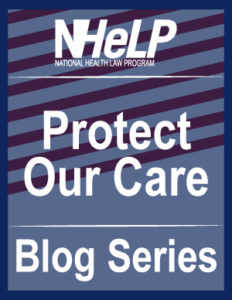 As the opioid crisis ravages the nation, children are entering the foster care system in record number. After reaching the lowest point in a decade, the number of children in foster care increased by almost 8 percent between 2012 and 2015. These children enter care with an array of challenges: infants exposed to opioids in utero may have neonatal abstinence syndrome (NAS), which can cause excessive weight loss and seizures. Older children may have an increased need for mental health services; children experiencing both exposure to family members with Substance Use Disorder (SUD) and parental separation are at an increased risk of suicide attempts, depression, and other adverse outcomes. These children are the hidden victims of the opioid crisis.
As the opioid crisis ravages the nation, children are entering the foster care system in record number. After reaching the lowest point in a decade, the number of children in foster care increased by almost 8 percent between 2012 and 2015. These children enter care with an array of challenges: infants exposed to opioids in utero may have neonatal abstinence syndrome (NAS), which can cause excessive weight loss and seizures. Older children may have an increased need for mental health services; children experiencing both exposure to family members with Substance Use Disorder (SUD) and parental separation are at an increased risk of suicide attempts, depression, and other adverse outcomes. These children are the hidden victims of the opioid crisis.
Almost all children in foster care rely on Medicaid for health care. States get extensive help providing for the high needs of children in foster care; the federal government contributes, on average, 63 percent of every Medicaid dollar a state spends. If state Medicaid expenditures rise, federal Medical expenditures rise proportionately.
Medicaid is a significant funding source for state child welfare agencies, funding nurses and other health care professionals within child welfare agencies. In FY 2014, Medicaid constituted approximately 3 percent of total expenditures by child welfare agencies, but in some states it is much more. In West Virginia, Medicaid constitutes 11 percent of spending by their child welfare agency and in Vermont, it is 31 percent of all funds.
The Senate’s proposed Better Care Reconciliation Act (BCRA) puts all of these services in danger by dismantling Medicaid’s federal-state partnership, imposing per capita caps, and cutting federal Medicaid expenditures by over $750 billion, or 26 percent, by 2026 and by 35 percent by 2036.
Per capita caps and foster care do not mix — the cap’s funding structure makes this inevitable. Children in foster care would be lumped together with all other children under a “children’s cap.” But children eligible for Medicaid due to foster care status have higher costs—they account for 9 percent of the all spending for non-disabled children, while comprising only 2 percent of nondisabled child enrollees. A significant uptick of children in foster care means that per capita caps based on past expenditures will be insufficient because states would be serving a higher proportion of higher cost children.
Instead of helping states meet foster children’s needs, BCRA gives states incentives to reduce Medicaid expenditures by the child welfare agency by depressing these children’s Medicaid enrollment or service utilization. A state might delay medical screenings upon entering care, or reduce follow up exams and treatment. Furthermore, because the cap is ultimately finalized in the aggregate, if foster care related costs create spending pressures, all Medicaid services are at risk.
BCRA cuts off pathways to family reunification. The majority of children in foster care return home. For these children’s well-being, parents of children in foster care must have access to SUD treatment. But because BCRA repeals Medicaid expansion, 1.2 million adults, many of them parents, stand to lose access to SUD treatment.
When a state removes children from their parents, the state has an obligation to take care of them. With the opioid crisis devastating families and overwhelming child welfare agencies, Medicaid could not be more important. Protecting Medicaid means access to all-important physical and mental health care to children of the opioid crisis, treatment for their parents, and increased opportunities for family reunification.
Contact your senators and urge them to vote against BCRA or any bill that does not protect Medicaid. For more details on how Medicaid supports children of parents with SUD, see our issue brief on this subject. For more information on threats to Medicaid, sign up for our email updates and follow us on Twitter and Facebook.
